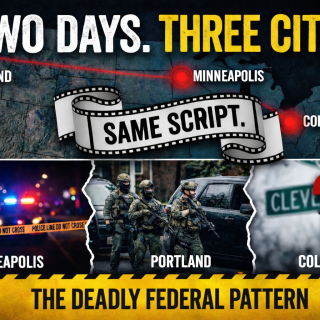I submitted this “guest essay” to the New York Times following publication their fourth error-filled opinion essay about universities and the humanities in less than one month. Not surprisingly, they did not publish it. I turn to the Columbus Free Press because the issues are important to all of us.
I note that in late autumn 2021, under a new editor, the New York Times changed the name of its Opinion or Op-Ed essays since the 1890s, to Guest Essay. At the same time, they removed any mention of accuracy or factual from their criteria.
As a retired history, humanities, and social science professor whose scholarship is internationally recognized and who created university-wide interdisciplinary programs over a career of more than 50 years, I must add urgently needed historical accuracy and clarity. The flow of ahistorical, unknowledgeable, and myth-spreading ideological Opinion essays demands this. In less than one month, the New York Times published Ross Douthat’s “I’m What’s Wrong with the Humanities” (Mar. 8); Pamela Paul’s “How to Get Kids to Hate English” (Mar. 9); and now a teaching assistant professor and blogger Bret C. Devereux’s “Colleges Should Be More than Just Vocational Schools” (Apr. 2)
Individually and together, they add to an almost calculated thrust that alternates between a willfully repeated set of myths and misunderstandings, on the one hand, and calculated attacks on higher education, on the other hand.
North Carolina State University teaching assistant professor Devereux identifies himself as an ancient historian and blogger on pop culture. Yet he is profoundly ignorant about the relationship of universities and vocationalism. From their origins early in the second millennium in Paris and Bologna through the Renaissance, transplantation of English and Scottish universities to the American colonies, and the era of the nineteenth-century colleges through the present, higher education in almost all its forms is inseparable from vocationalism. There is no “golden age” to return.
For most of a millennium, while “scholars” and “paupers” largely overlapped, most students prepared for “careers” as clergy or administrators. This was true for the colonial and nineteenth-century colleges where there was no conception of what in the second one-third of the twentieth century many humanities professors mystified and exaggerated to a never central “liberal arts college,” Great Books core, or a romanticized literary and philosophical “canon.”
When US colleges and universities had their first great expansion with the Civil War era Morrill segregationist and sexist land grant act (dispossessing Indigenous Peoples’ land), the thrust was the development of agriculture, mining, and manufacturing and their vocations. In the post World II, 1950s, and 1960s federal and state expansion of both public and private universities, vocationalism and economic growth were at the core.
General education was more a vague, contradictory ideal and mystique than a curricular reality or a small elite liberal arts college—and less or more at Columbia and Chicago—conceit than a matter of common learning. By myth, I do not mean falsehood. Myths only accepted spread with a sense of resemblance to some persons’ perceptions of reality.
Devereaux perpetuates a false opposition that does more harm than it stimulates change. With many others—especially humanities professors—he whines about a fictional past when they should work much harder to integrate the seldom defined liberal arts into a truly integrated curriculum. He imagines seventeenth- and eighteenth-century universities, and leapfrogs to the recent past in one sentence.
My undergraduate engineering friends miss reading and would jump for courses that connect the history, philosophy, and literature of science and technology. But they will not change their majors.
Generally conservative opinion columnist Pamela Paul completely accepts and repeats flawed opinions and magnifies them even more out of resemblance with reality with respect to English major and the undocumented impact of the Common Core in secondary schools. She has no interest in cause and effect, or evidence.
First, she parrots Nathan Heller’s almost completely erroneous New Yorker essay, “The End of the English Major,” the red meat of recent social media posts. Heller’s examples of Arizona State and Harvard are diametrically atypical.
He pays no attention to changes in admission policies that favor, indeed overload the STEM fields (leading to unadmitted high flunk and drop out rates) and critically harm not just the humanities but the social and natural sciences as well.
University budget models are never mentioned in these repetitive laments.
Paul is wrong about literature students fleeing to “interdisciplinary majors.” Those concentrations are almost always based in the and Humanities.
In asserting but not attempting to argue or document that the Common Core somehow was “How to Get Kids to Hate English,” Paul repeats Diane Ravitch’s unproved assertions that contradicted her own earlier views. First, the Common Core was much more ideology than practice. It was never “common.” Second, there is no evidence that it did any such thing. As with Devereux and Miller, the timing makes no sense.
Finally, conversative columnist Douthat continues his never researched, always first-person based mystification or is it mythification of universities. In this episode, he writes “with a mix of smugness and horror,” but not facts or logic, from social media not classrooms, students, professors, or universities.
This is common, right, center, and left. From social media, perhaps still searching for the yet to materialize University of Austin (Texas), Douthat skips to the notorious out of touch opinion pages of the Wall Street Journal, repeating the title “College Should Be More Like Prison.” Noting that that might be too “extreme,” he nonetheless endorses “embracing an identity [for the humanities] as the modern multiversity’s internal exiles.” Misplaced metaphors know no limits.
Following the failings of far too many humanities—and also social and natural science professors—in the face of STEM, retreating to a self-imposed “prison” or “internal exiles” is surrendering without making any effort to “reconstruct the ‘uni-versity’ from the ashes of the ‘multi- or mega-versity’” as I propose in my book in progress. I begin with learning from the actual history of universities in order to restructure and recenter them for the present and future.
---------------------------------
Harvey J. Graff is Professor Emeritus of English and History at The Ohio State University and inaugural Ohio Eminent Scholar in Literacy Studies. Author of many books on literacy and education, children and youth, cities, and interdisciplinarity, he is now writing “Reconstructing the ‘uni-versity’ from the ashes of the ‘multi- and mega-versity.”



